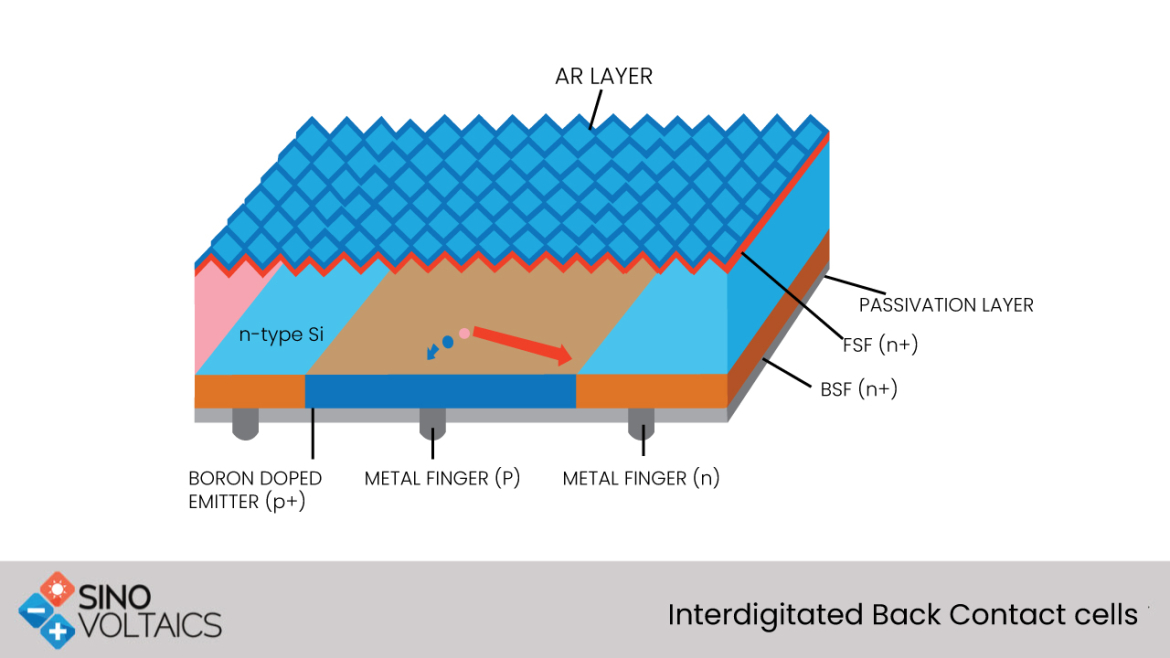IBC Solar Cells
The IBC solar cells (Interdigitated Back Contact) is one of the configurations of Rear Contact Solar Cells. The Rear contact solar cells can theoretically achieve higher efficiency by moving all of the front contact grids – or part of it – to the rear side of the device. The potential higher efficiency is realized due to the reduced shading on the front of the cell and this is specifically useful in the high current cells like concentrators or large area installations. There are various Rear Contact Solar Cell configurations and IBC cells being one of them.
IBC solar cells
Rear contact solar cells have the ability to prevent all shading losses by placing both contacts on the rear of the cell. The pairs of electron hole generated by the light that is absorbed at the front surface of the cell can still be collected at the rear of the cell, by the use of a thin solar cell manufactured from high quality material. Such cells are especially useful in the concentrator applications, where the cell series resistance effect is much greater. An additional benefit of these cells is that cells with both of the contacts on the rear can be interconnected easier and can be placed closer together in the module because there is no need for any space between the cells. 
History of IBC solar cells
Interdigitated back contact solar cells were originally called FSF (the front surface field) cell. The interdigitated back contact (IBC) cell was primarily studied in the late 1970s. The PC (point contact) cell that was developed by the University of Stanford in the 1980s was able to reach efficiencies of more than 20% from the beginning. The IBC cells were first created for the unmanned aircrafts and solar powered race cars in the 1990s, and were later extended to the large scale production for PV generation systems in the 2000s. To reduce the manufacturing costs, numerous low cost processes were developed. The highest conversion efficiency reported to time for a large area industrial cell is 23.4% which was reported in 2008.
Uses of Interdigitated back contact solar cells
Interdigitated back contact solar cells can potentially achieve higher efficiency by so the IBC designs are specifically useful in applications such as high current cells like concentrator PVs. There are two other different configurations of back contact solar cells than the IBC, which are the EWT (Emitter wrap through) and MWT (Metalization wrap through) under the polycrystalline Si solar cells.

YASH KUMAR
on 04 Jan 2024